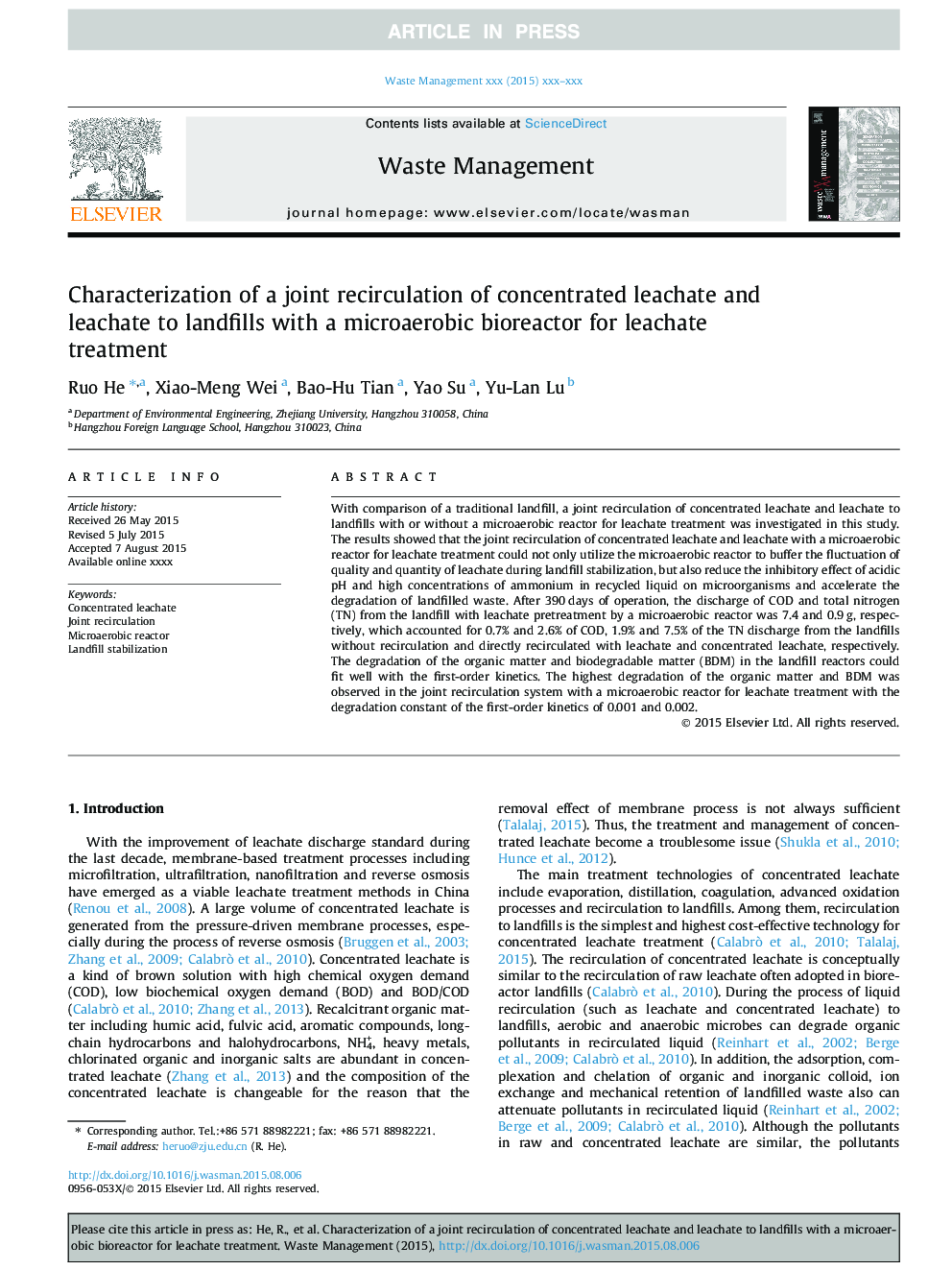| Article ID | Journal | Published Year | Pages | File Type |
|---|---|---|---|---|
| 6354499 | Waste Management | 2015 | 9 Pages |
Abstract
With comparison of a traditional landfill, a joint recirculation of concentrated leachate and leachate to landfills with or without a microaerobic reactor for leachate treatment was investigated in this study. The results showed that the joint recirculation of concentrated leachate and leachate with a microaerobic reactor for leachate treatment could not only utilize the microaerobic reactor to buffer the fluctuation of quality and quantity of leachate during landfill stabilization, but also reduce the inhibitory effect of acidic pH and high concentrations of ammonium in recycled liquid on microorganisms and accelerate the degradation of landfilled waste. After 390Â days of operation, the discharge of COD and total nitrogen (TN) from the landfill with leachate pretreatment by a microaerobic reactor was 7.4 and 0.9Â g, respectively, which accounted for 0.7% and 2.6% of COD, 1.9% and 7.5% of the TN discharge from the landfills without recirculation and directly recirculated with leachate and concentrated leachate, respectively. The degradation of the organic matter and biodegradable matter (BDM) in the landfill reactors could fit well with the first-order kinetics. The highest degradation of the organic matter and BDM was observed in the joint recirculation system with a microaerobic reactor for leachate treatment with the degradation constant of the first-order kinetics of 0.001 and 0.002.
Related Topics
Physical Sciences and Engineering
Earth and Planetary Sciences
Geotechnical Engineering and Engineering Geology
Authors
Ruo He, Xiao-Meng Wei, Bao-Hu Tian, Yao Su, Yu-Lan Lu,
